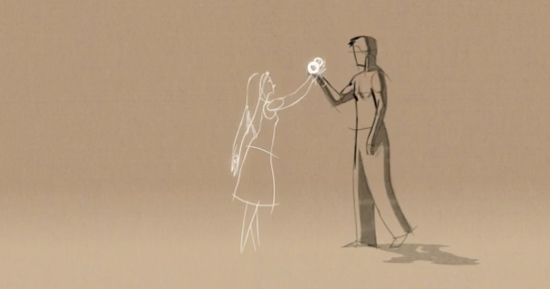MALE GAZE
Laura Mulvey
In short:
Women are to be seen (by men) as sexual objects in media through shot types and movement.
In her essay "Visual Pleasure and the Narrative Cinema", Mulvey stated that women were objectified in film because heterosexual men were in control of the camera.
An interesting point that Mulvey makes is that women look at themselves through the eyes of men (in media). This means that the female gaze is the same as the male gaze. This can either be a manifestation of unequal power between gazer and gazed, or a conscious or subconscious attempt to develop that inequality between men and women.
Mulvey focuses on:
-How men look at women
-How women look at themselves
-How women look at each other
The Male Gaze theory is based around the way media portrays women.
It claims media institutions emphasise the curves of the female body when advertising. In the case of music videos, the camera lingers on the woman's legs, bum, breasts, etc.
RECEPTION THEORY
Stuart HallIn his theory, Hall suggests that media texts are encoded by the producer, meaning that the producer fills the product with values and messages. However, the public can perceive the product in different ways, depending on their cultural, religious and economic background, among other variables.
USES & GRATIFICATION THEORY
Blunter & Kats
The Uses and Gratifications theory looks at the motives of the people who use the media, posing the question why do we consume the media that we consume?
The theory makes the audience active, as they choose what they want to consume; they are not forced into consumption - we watch the films we want to, the media simply creates the product.
The theory aslo argues that audience's needs have social and psychological needs which generate certain expectations about the mass media.
THERE ARE 4 MAIN AREAS:
- 1- Diversion
- 2- Surveillance
- 3- Personal Identity
- 4- Personal relationships
- Relationships with the media:
- Using the media within relationships
HYPODERMIC NEEDLE THEORY
The 'Hypodermic Needle' or 'Magic Bullet' theory implies mass media has a direct, immediate & powerful influence on audiences.
In the 1940s and 50's media was perceived as a powerful influence on behaviour change.The theory suggests that the magic bullet is fired from the 'media gun' straight into the passive audience's head, and the audience is immediately affected by the messages attached to the 'bullet'.
However, the theory was not based on research findings, but rather on assumptions about human nature at the time. Therefore, this theory is not accepted at present.
Now-a-days we understand that everyone consumes media in a different way, and although audiences are affected by media, it is not always in the way the producers intend.
In the 1940s and 50's media was perceived as a powerful influence on behaviour change.The theory suggests that the magic bullet is fired from the 'media gun' straight into the passive audience's head, and the audience is immediately affected by the messages attached to the 'bullet'.
However, the theory was not based on research findings, but rather on assumptions about human nature at the time. Therefore, this theory is not accepted at present.
Now-a-days we understand that everyone consumes media in a different way, and although audiences are affected by media, it is not always in the way the producers intend.
The most
famous incident often cited as an example for the hypodermic needle model was
the 1938 broadcast of The War of the Worlds and the subsequent reaction of
widespread panic among its American mass audience.
However, this incident
actual sparked a research movement, led by Paul Lazarsfeld and Herta
Herzog, that disproved the theory.
Audience's reactions to the broadcast were, in fact, diverse,
and were largely determined by situational and attitudinal attributes of the
listeners.



